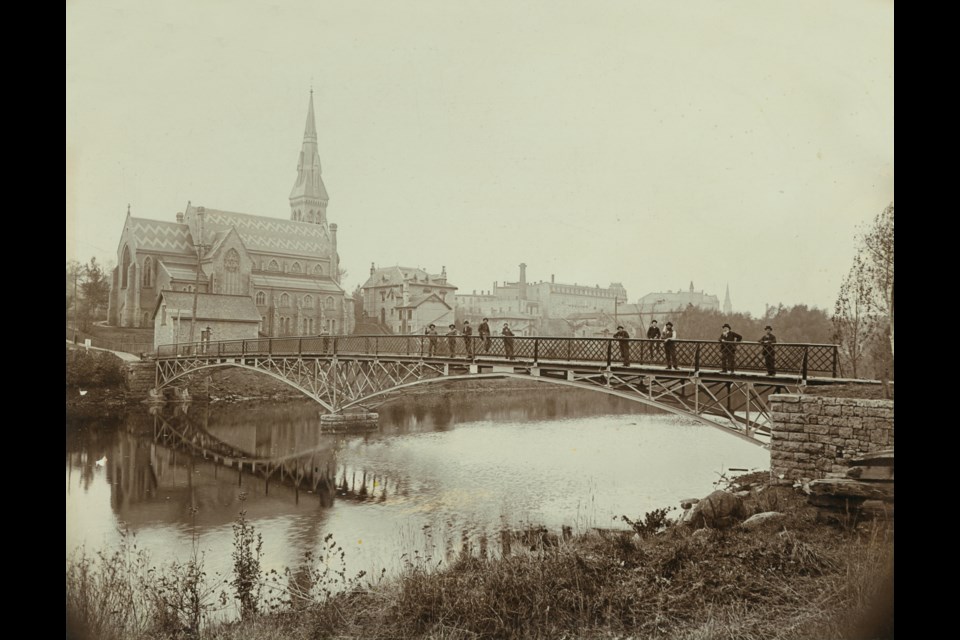The Heffernan Street Footbridge is one of the city’s oldest and most photographed landmarks and its popularity has saved it from the wrecking ball at least two times.
“It’s an iconic bridge,” said local photo historian Donald Coulman. “There are stories of Rev. Arthur Palmer who used to paddle across the river there before the bridge was built on his way to church.”
Palmer was the first rector for St. George’s Anglican Church and oversaw the construction of two churches in St. George’s Square downtown. He went on to become Archdeacon of Toronto and retired to England in 1875. He never got to see the erection of the final stone church on Woolwich Street in 1879 or the first steel footbridge built two years later in 1881.
The original steel arch bridge spanned the river from bank to bank and was popular with St. George’s congregation as well as residents from the east side of the Speed River visiting downtown.
In 1913 the Dominion Railway ordered that the bridge be removed “due to the possible dangers presented to pedestrians crossing the railway marshalling yard.”
Designs were drawn up by city engineer Ernst Clawson for a large reinforced-concrete arch bridge that spanned from the base of Heffernan Street on the east side of the river to Woolwich Street on the west.
The new open-spandrel arch bridge, constructed by Galbraith and Cate, went over the railway marshalling yard eliminating any danger to pedestrians and remained a popular walking route until 1971 when Guelph City Council made plans to tear it down.
“I have no idea why they wanted to tear it down,” said Coulman. “The City went through a tear down period in the late 60s and early 70s when they demolished a bunch of historic buildings and replaced them with a bunch of modern boxes.”
The decision to tear down the bridge was not well received.
“There really was a public outcry,” said Coulman. “They decided not to tear it down but the bridge was in bad shape and needed to be restored.”
In 1990 the Heffernan Street Footbridge was designated a heritage site and Guelph City Council led by Mayor John Counsell voted to restore it to its 1914 design.
Plans for the reconstruction were drawn up by city engineer R.D. Funnell and consulting engineers from Gamsby and Mannerow.
Significant sections of the bridge were removed and replaced by contractors, the Northland Construction Company and the bridge re-opened in 1991.
It continues to be a popular attraction for sightseers and walkers such as Taylor Flood and his family.
“We use the bridge a lot whenever we go downtown,” said Flood. “It’s a beautiful day for a walk.”



